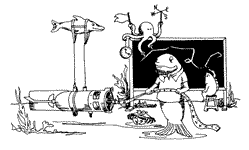
|
The IEEE Seventh Working Conference on Current Measurement TechnologyCurrent and Wave Monitoring and Emerging TechnologiesMarch 13-15 | Bahia Hotel | San Diego, CA, USA |
||
|
Technical Program Accomodations Order the Proceedings Committee and Contact Info |
||
Design considerations of an acoustic-travel-time current sensor on a profiling free vehicleFred ThwaitesStatus: Accepted
Co-Authors: We are building a second-generation High-Resolution Profiler to make
vertical profiles of water velocity over scales from microstructure to
full-ocean depth, to measure internal waves and turbulence. The profiler
will measure microstructure with shear probes, fine structure with an
acoustic-travel-time current sensor, large-scale water velocity with an
electromagnetic field sensor, and profiler motion with accurate Submitted on November 19, 2002 |
|
Sponsored by the Current Measurement Technology Committee (CMTC) of the IEEE Oceanic Engineering Society. All content reserved. Contact jrizoli@whoi.edu for more information. |
||